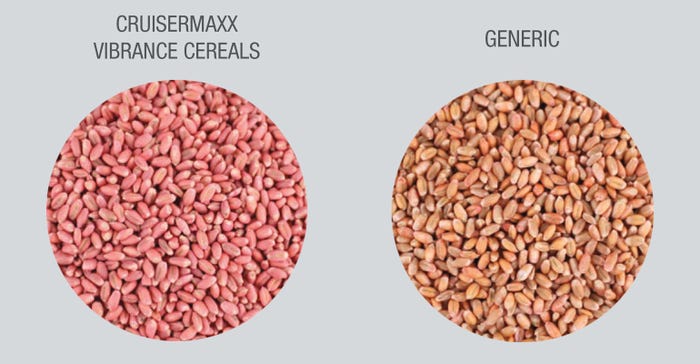
It's been a stressful summer for the people and plants of Kansas.
After a brutally dry winter and a couple of late freezes and widespread hail losses in the northwest, many producers saw reduced wheat yields and dismally low prices. For much of the eastern part of the state, persistent heat and drought causes heavy losses in the corn crop.
Stubborn drought was still hanging on through late August. In east-central Kansas, the area in exceptional drought almost doubled from Aug. 7 to Aug. 14, even though much of the state received rain.
In other parts of the state, downpours created flooding situations and left the northwestern part of the state with soggy soils at a time when they are routinely hoping for enough soil moisture to germinate the winter wheat crop in the fall.
All of that adds up to a recommendation from Josh Kelley, Syngenta Seedcare product lead: It's a very good year to consider seed treatment when you are ready to plant wheat for the 2019 harvest.
"No matter what the conditions, there is likely going to be something out there making this season problematic," Kelley says. "Some folks are going to be looking at wetter conditions than they are used to seeing and will face challenges from fungal diseases such as rhizoctonia, pythium along with fusarium and common root rots as well as smut and bunt diseases. In other parts of the state, dryer-than-normal conditions create a greater insect threat from grasshoppers to aphids and Hessian fly."
Kelley says that producers have a choice of Syngenta seed treatment products depending on which stresses they need to fight.

THE DIFFERENCE: Note the bright red color of the Cruiser Maxx seed sample on the left, compared to the lighter color of a competitive treated seed. The loss of color is indicative of "dust off," or the loss of treatment that remains in planters or storage facilities rather than on the seed.

"The premier choice is Cruiser Maxx Vibrance Cereals," he says. "It offers both insecticide and broad spectrum fungicide protection. An additional advantage is that you also get greater vigor, enhanced growth, a more robust rooting system that allows a plant to uptake more nutrients."
That is of particular importance to growers in the Northern Plains, where getting a strong stand establishment in the fall can be important to summer yields.
In drier areas such as eastern Colorado and parts of Oklahoma and Texas, where producers may be looking more toward forage for cattle in the fall and winter and maybe even grazing out if conditions seem likely to impair a grain harvest, a treatment such as Vibrance Extreme may be a good fit. Vibrance Extreme will help the crop produce increased tonnage, which allows grazing more cattle or grazing them longer.
For producers who may be facing cool, wet growing conditions with little insect pressure, Dividend Extreme may be a good, lower-cost application.
Another consideration farmers should keep in mind, he says, is the "dust off" of competing products.
"Syngenta has done multiple tests to ensure that when growers or dealers apply seed treatment, the chemicals stay on the seed. You don't want it stuck in the planter or in the bin or the treatment equipment," he says.
Syngenta seed treatment products can be applied by seed dealers or can be added on the farm before planting.
"Our goal is to make sure that no matter who applies it or where treatment occurs, it stays with the seed where it does it job to protect the crop," Kelley says.
About the Author(s)
You May Also Like




